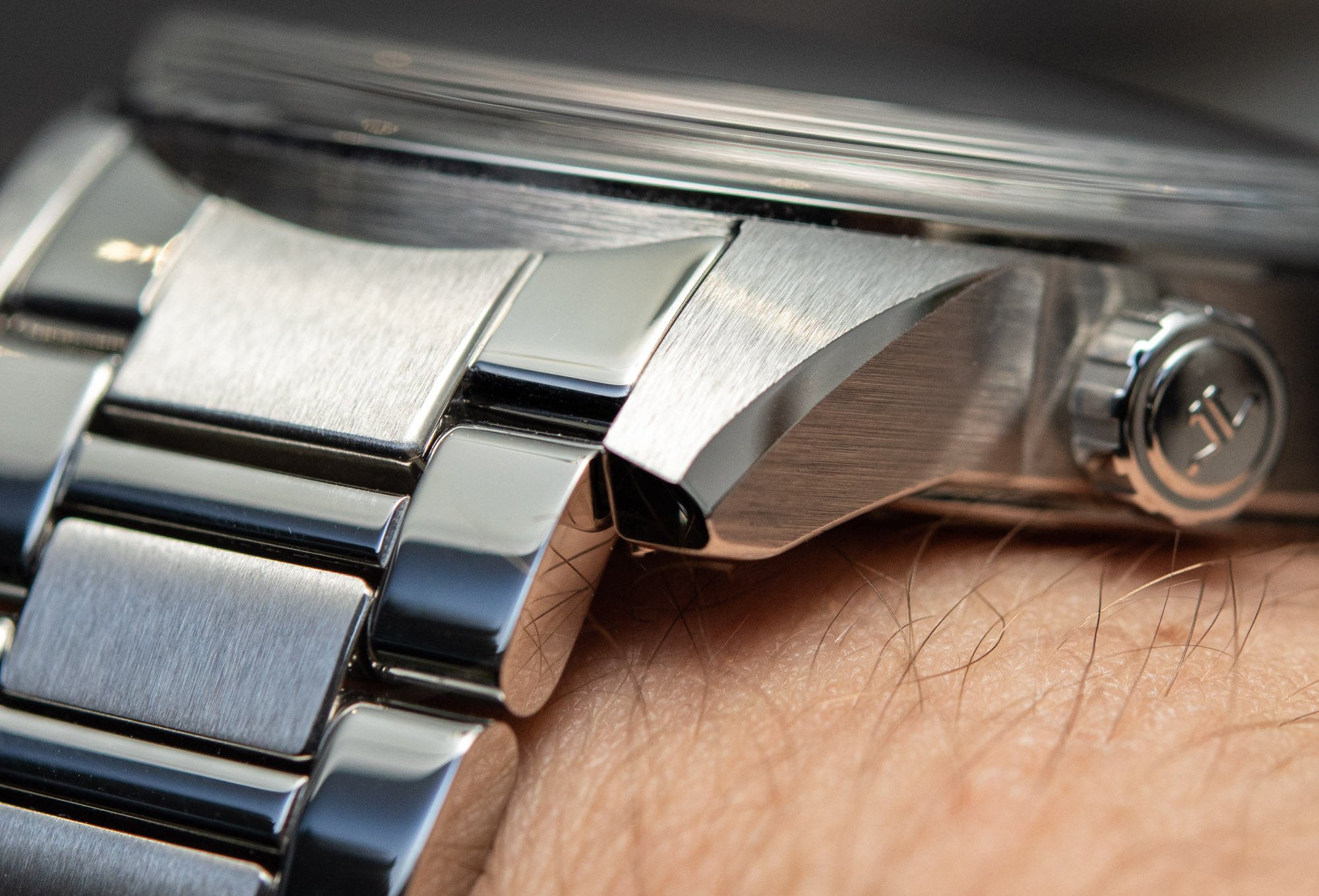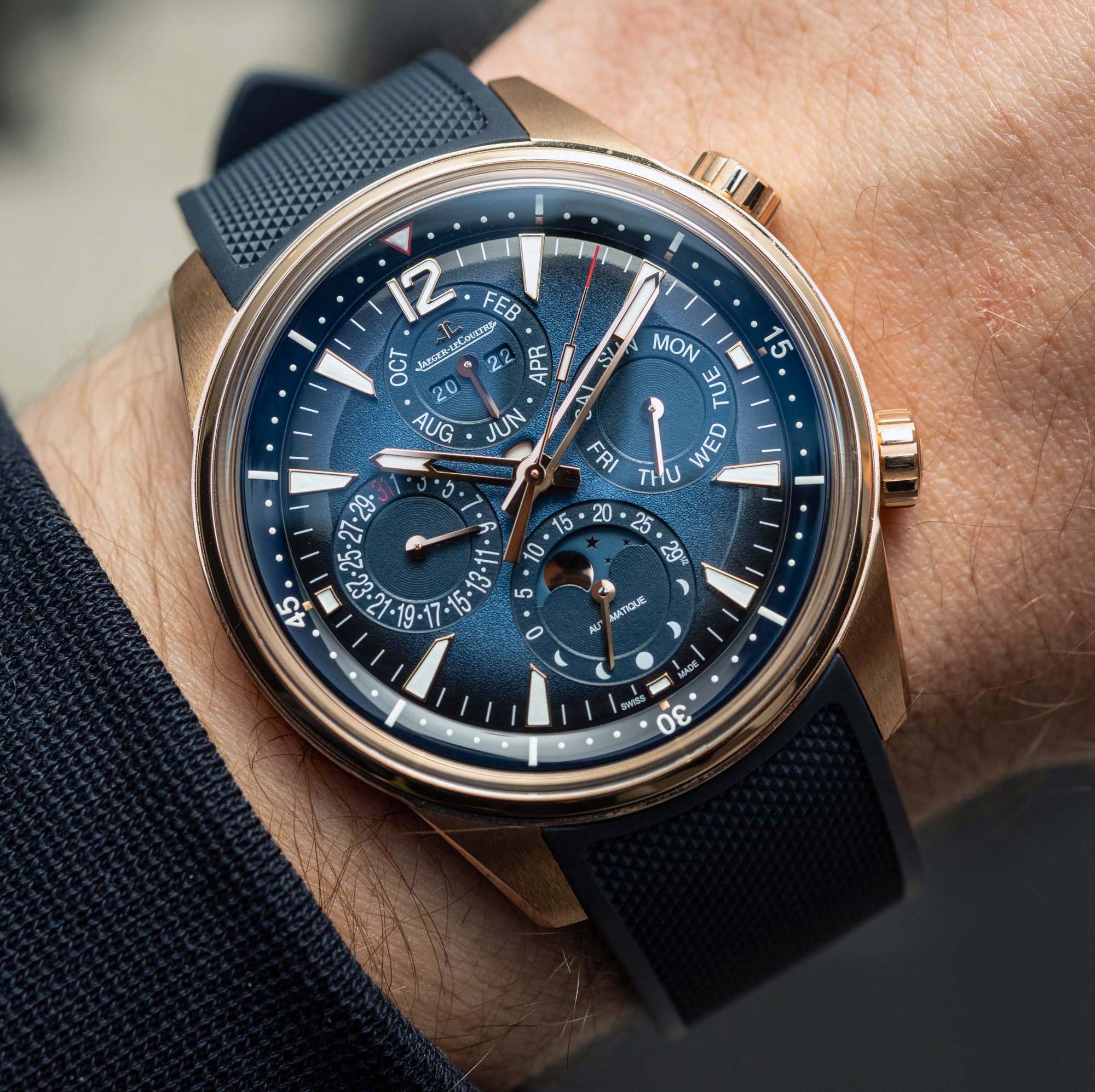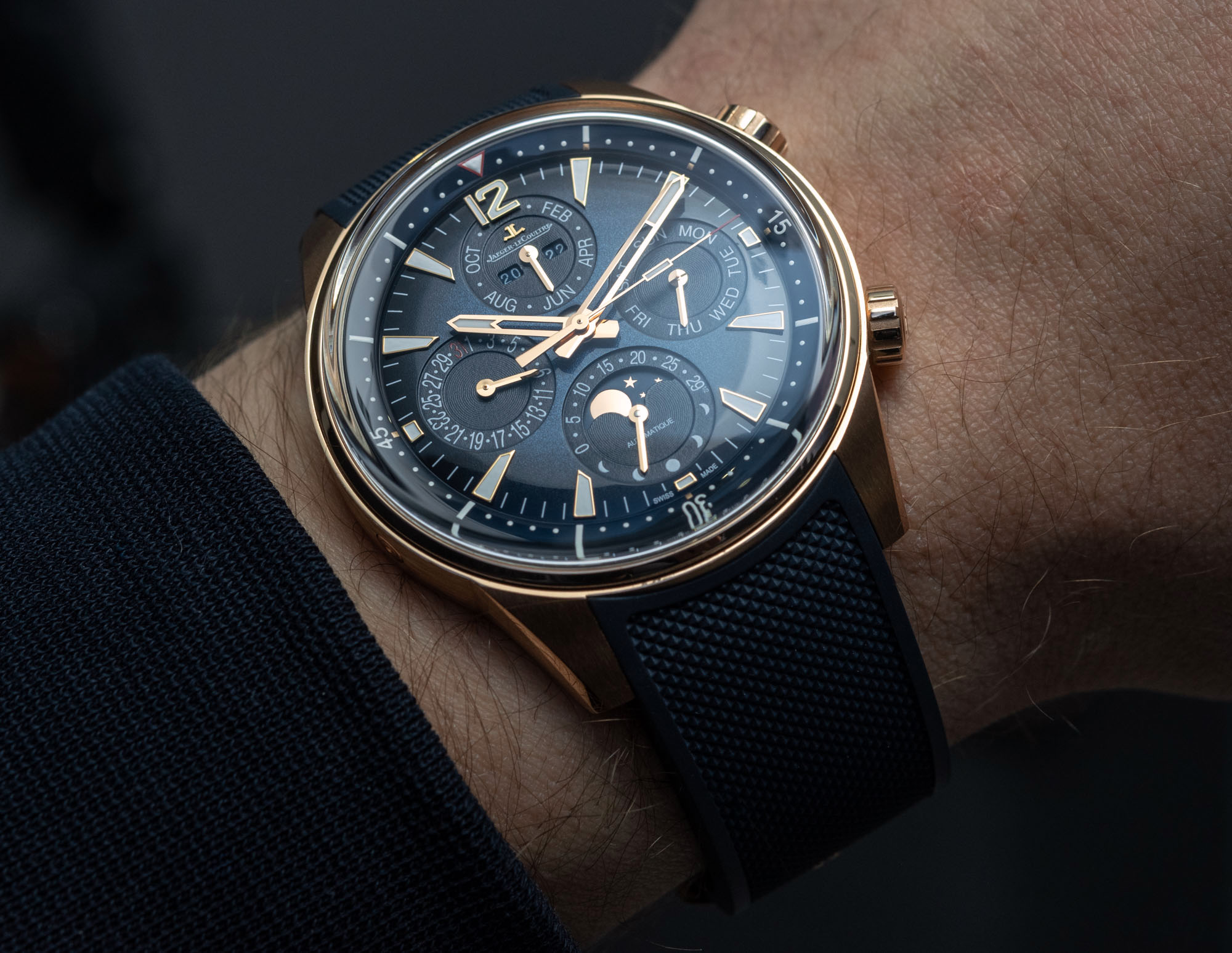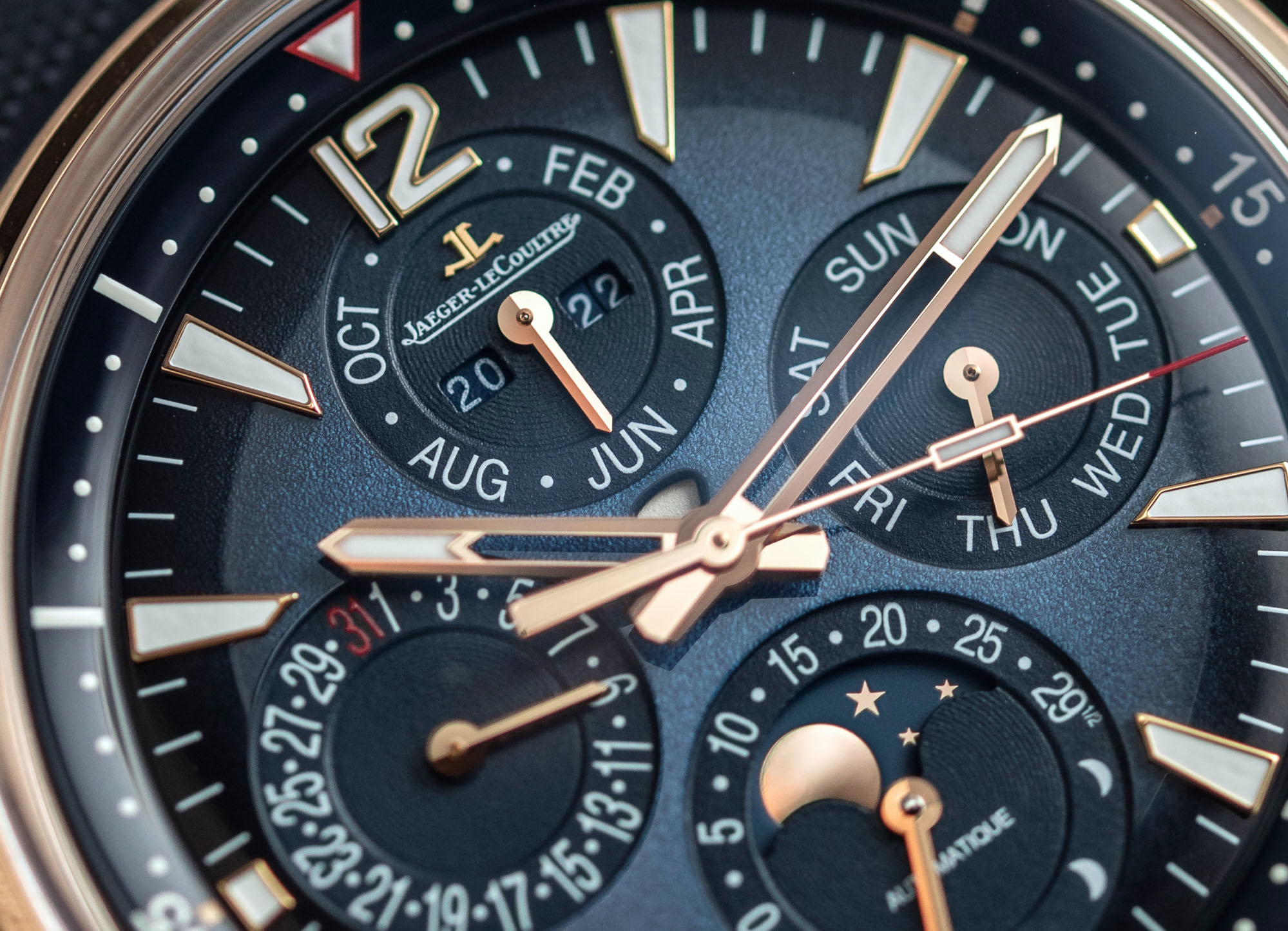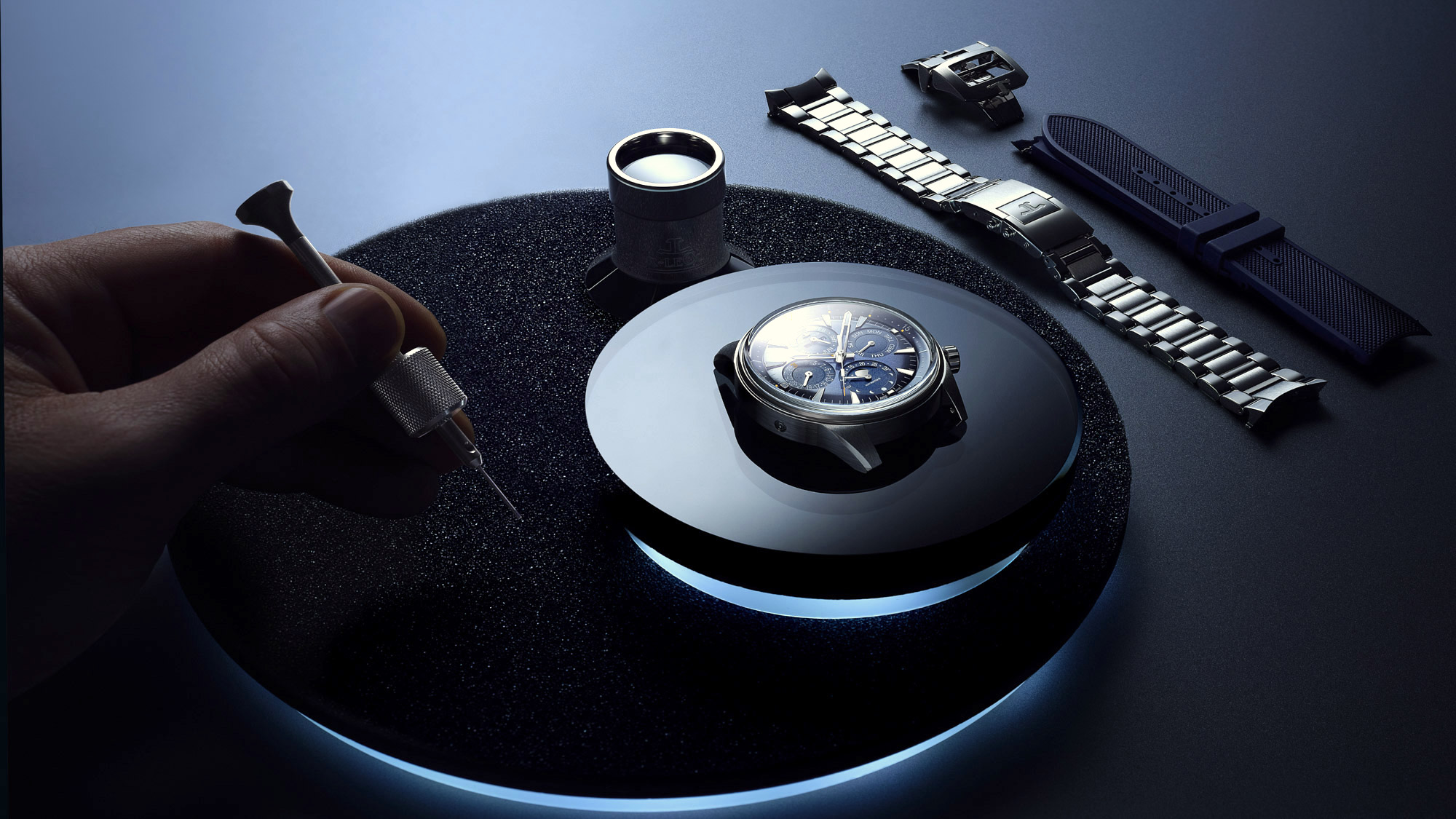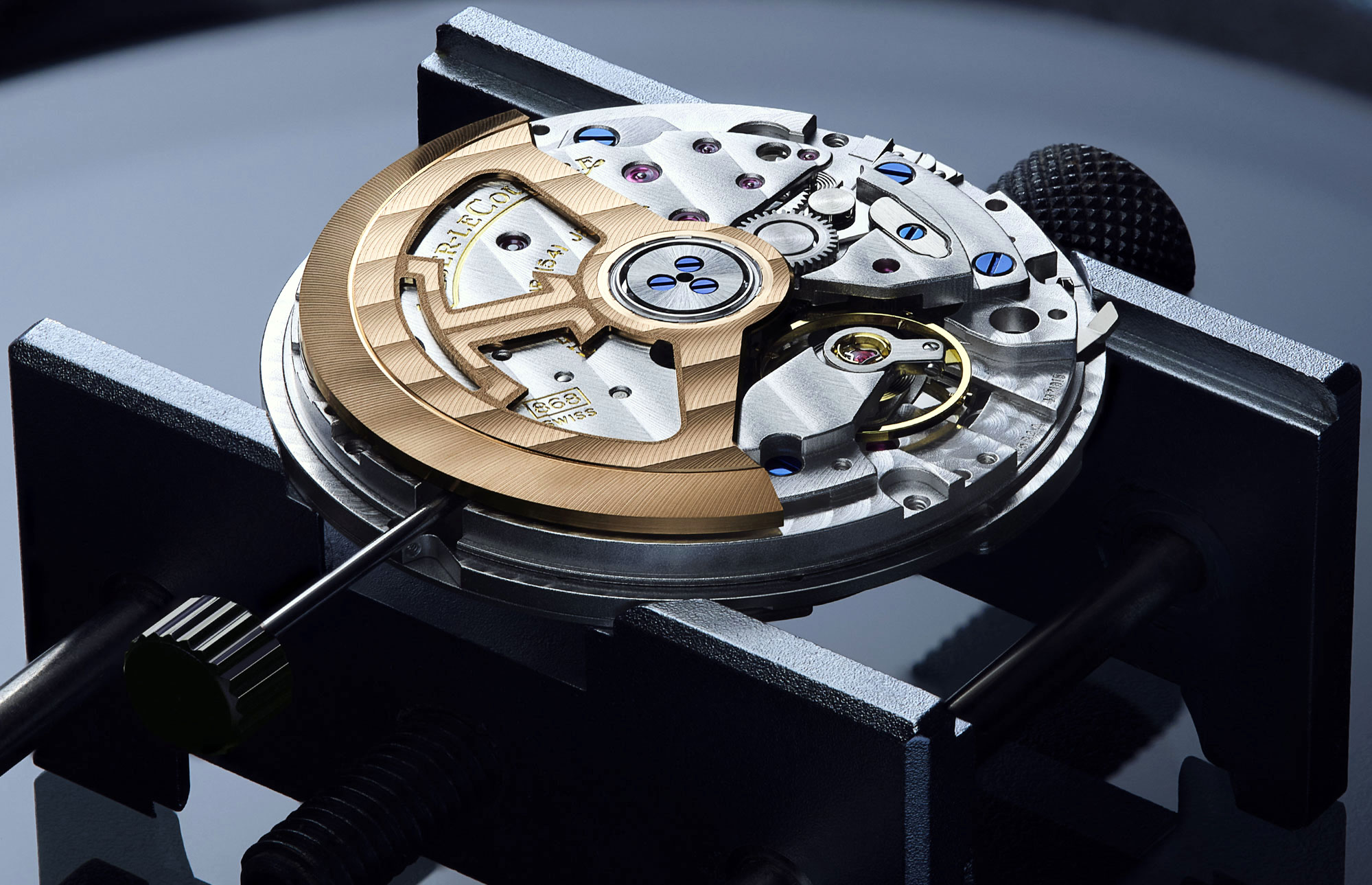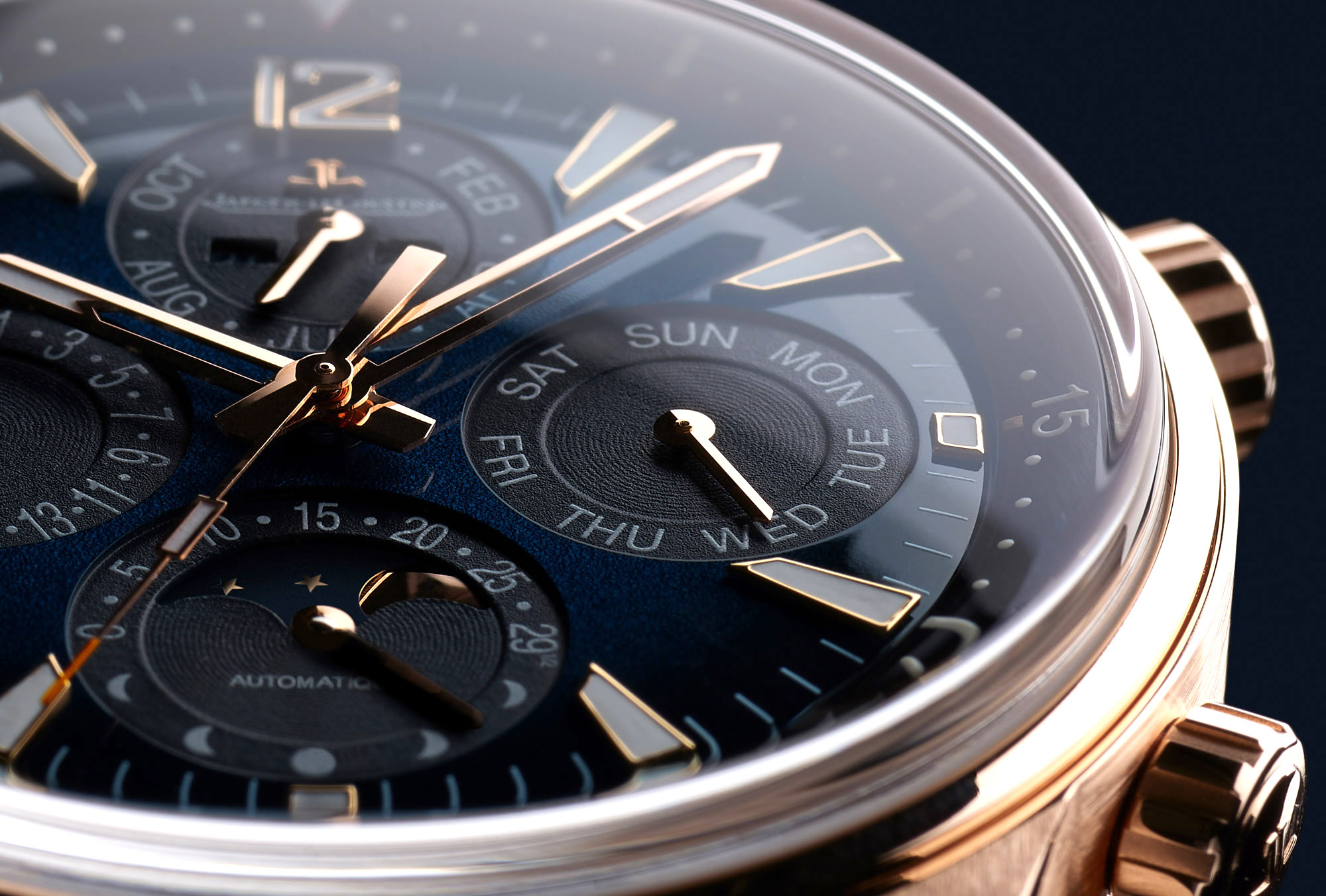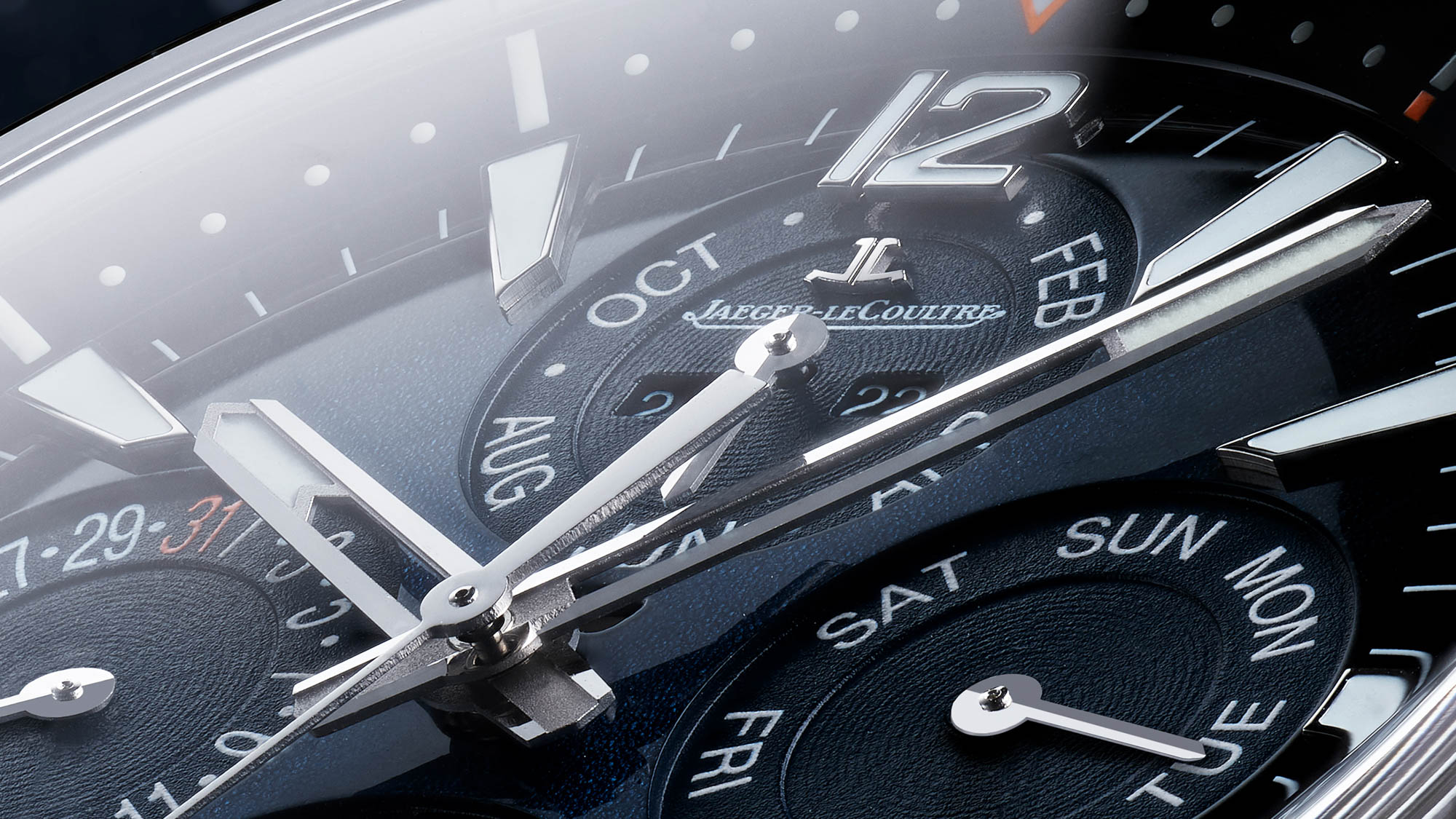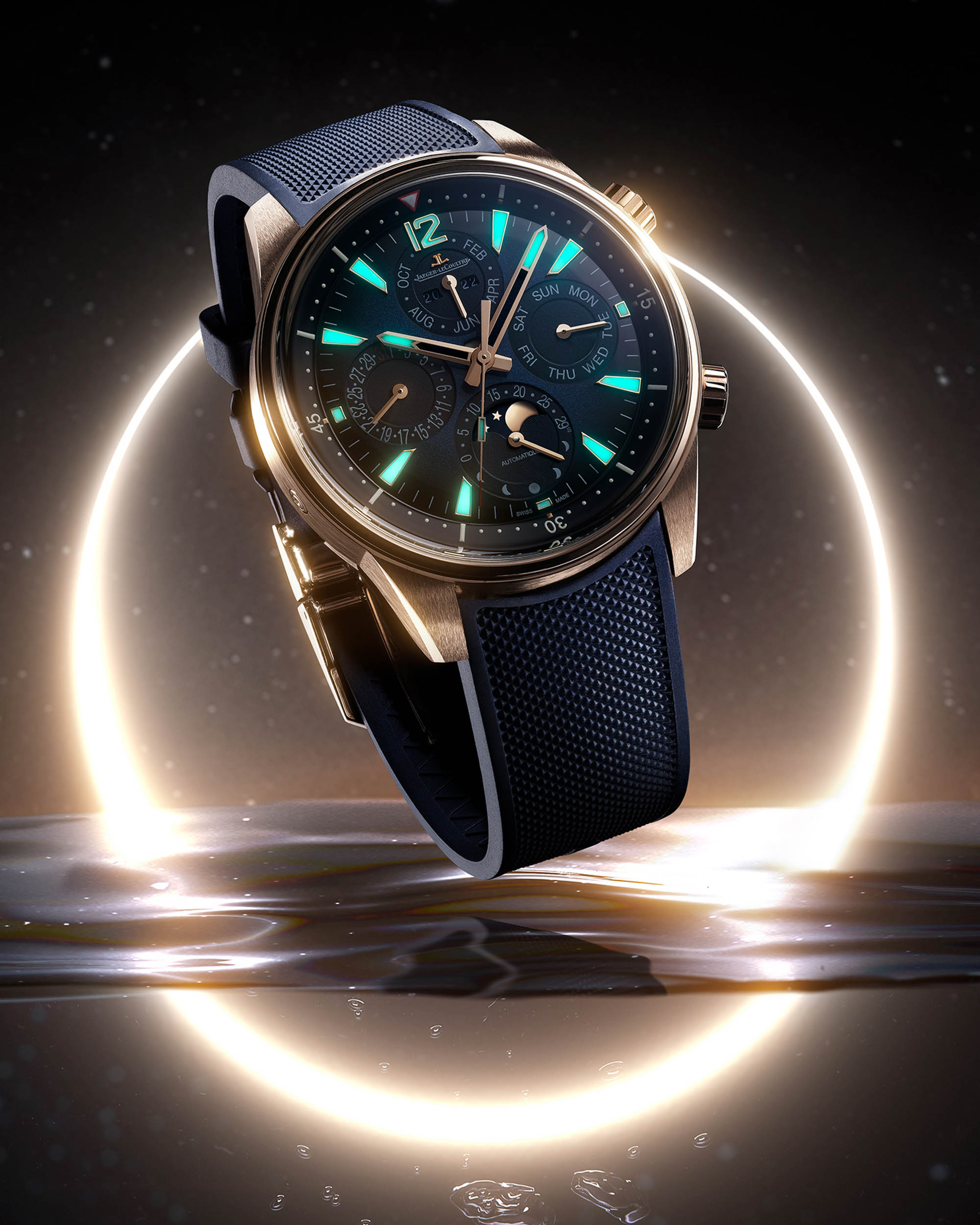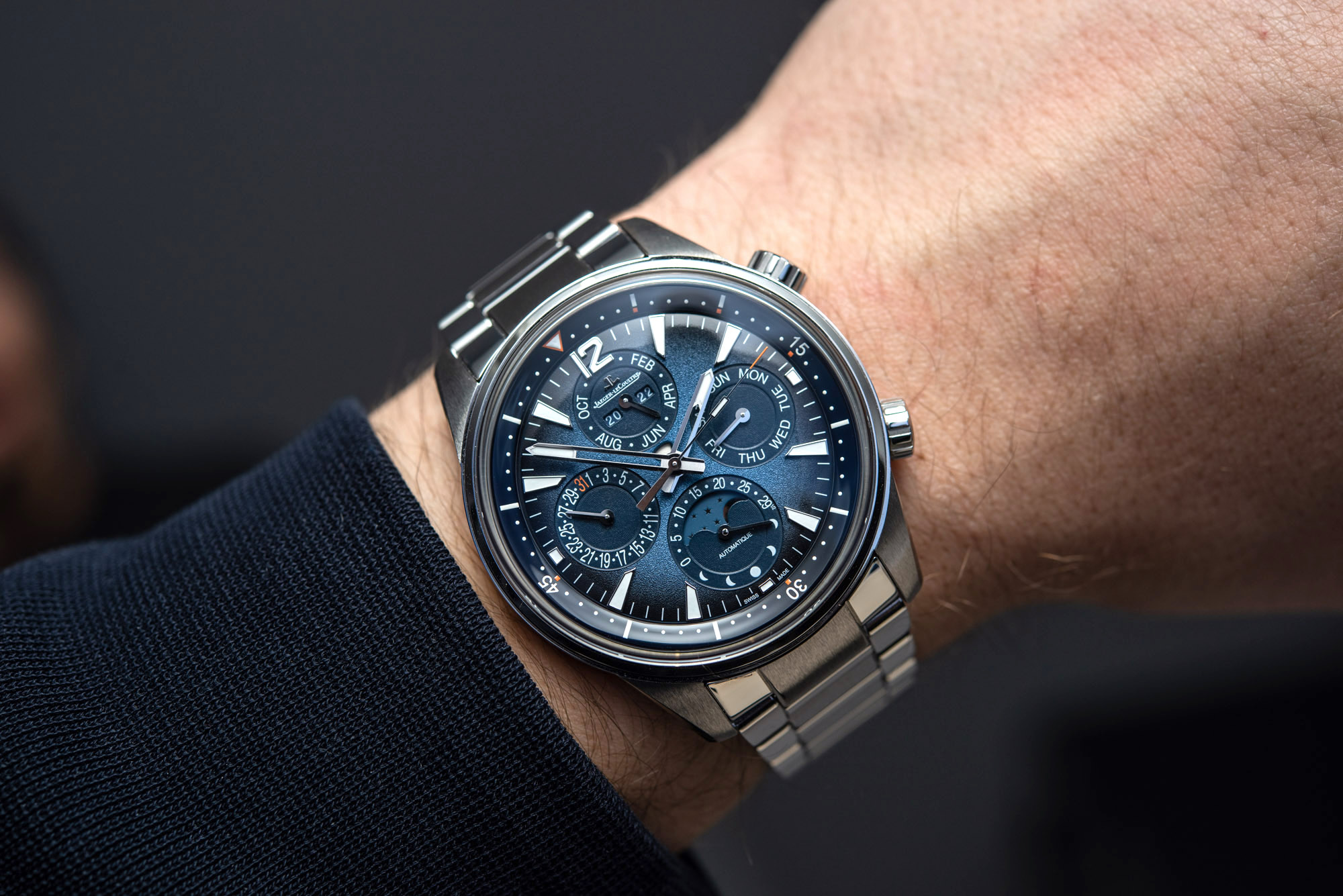
It could be argued that the somewhat skewed proportions of the Jaeger-LeCoultre Polaris collection could respond well to some additional visual complexity. Introduced in 2018 with just three narrow hands, a slim bezel, and robust lugs, the resulting wide dial left plenty of room and desire for something more. Enter the Jaeger-LeCoultre Polaris Perpetual Calendar and, with it, one of the better ways to spice up a three-hander: a full calendar with four subdials.
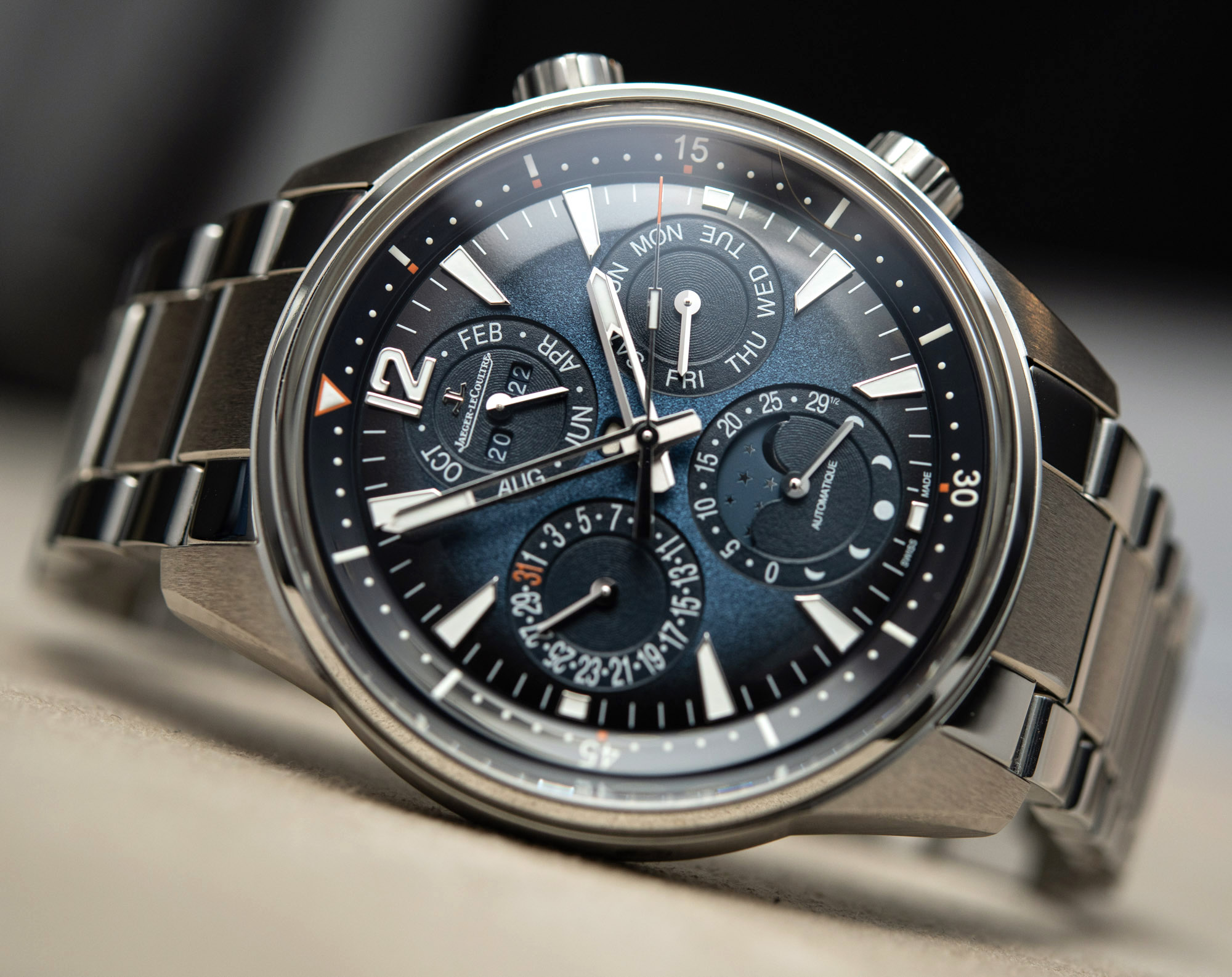
There is something to JLC’s perpetual calendar layout that makes it look so right. It manages to strike a tasteful balance between text and texture, functionality and excess. Optometrists will give you a more exact figure, but we’ll hazard a guess and say the majority of folks queueing up to buy one of these 30-grand luxury timepieces won’t be able to easily read some or most of the perpetual calendar’s tiny indications, not under any circumstance — and yet this hindrance won’t suffice to deter any of them.
Some watches absolutely nail proportions, more specifically the balance between case diameter, thickness of the bezel, and width of the dial, and also the volume and quantity of dial elements and the amount of free space between them. And while beauty certainly is in the eye of the beholder, the Polaris Automatic is rarely mentioned among those luxury watches that got proportions right.

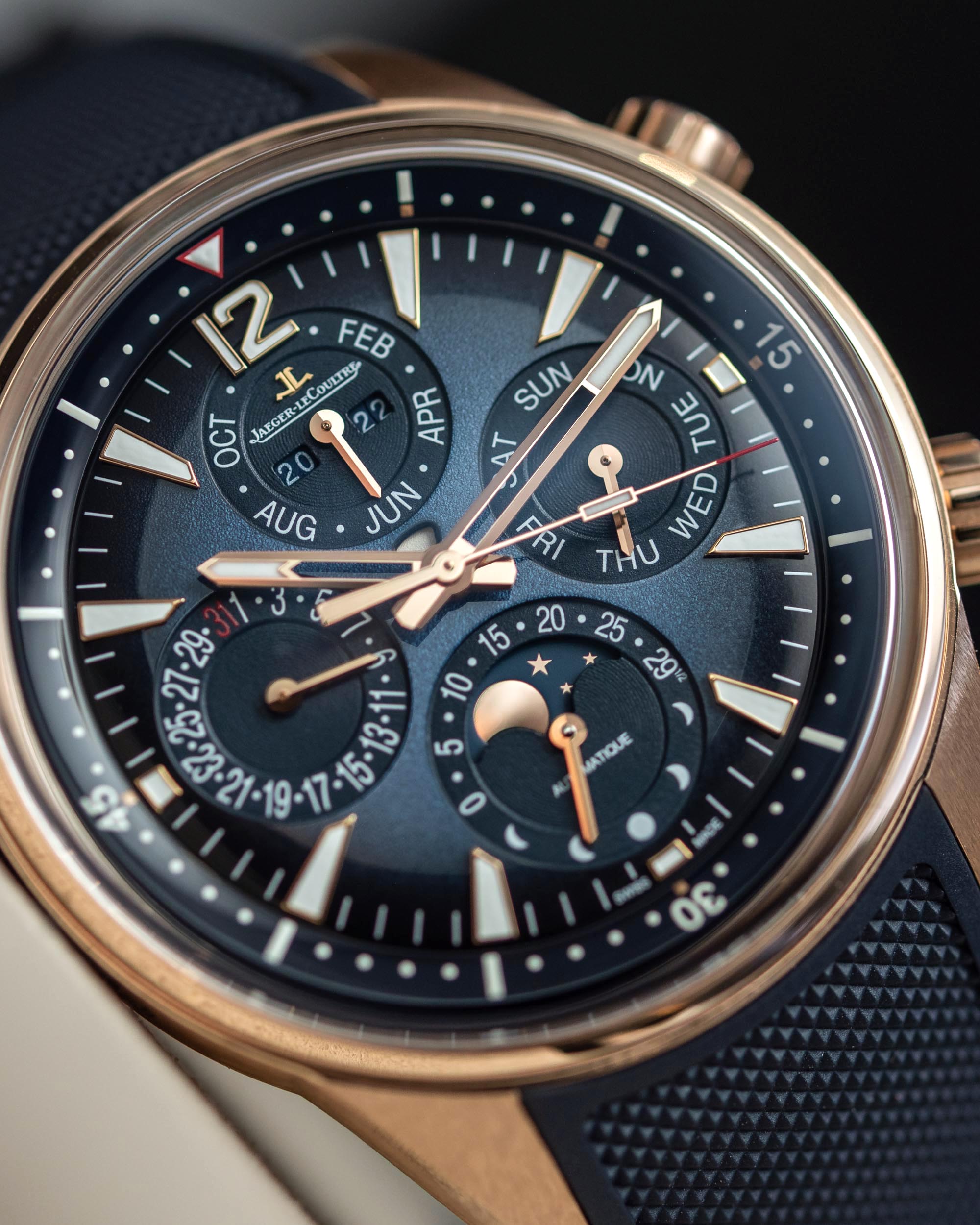
Presented under a boxed sapphire crystal that readily produces its own glorious halo under almost any light, four not-so-small subdials and a wide vignette — a dark graduation around the periphery of the dial — restore visual balance in the Polaris. The dark blue, almost black, flange ring and the vignette effect around the minute track create the impression of a narrower, positively more compact dial, while the four subdials carving into all but the 12 o’clock hour marker create an opposing effect, that of an expanding dial.
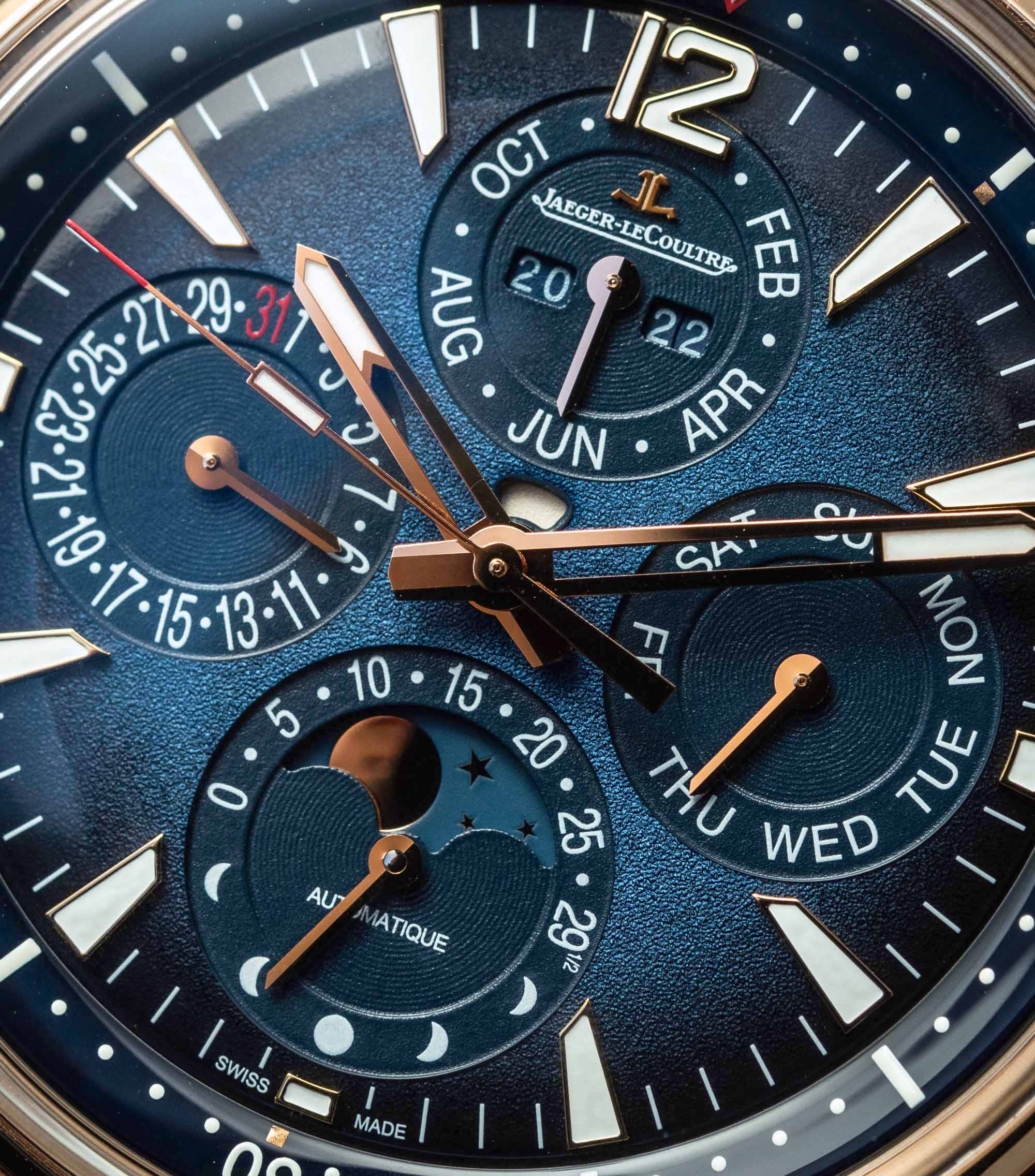
It’s long before the brain could compute all these opposing forces, but the eye will likely appreciate their cumulative effect in a watch that simply looks right. One’s brain has enough to think about, anyway, with a so-called full or complete calendar display with every indication on the dial and none on the caseback side: Beyond three center-mounted hands for the time, there is the date, day of the week, month, four-digit year, phase of the moon traditionally displayed for the Northern Hemisphere and indicated with a retrograde hand for its Southern counterpart, and a “security zone indicator” just above the center that turns red between 8pm and 4am. That is the time of day when the perpetual calendar can only be adjusted at the severe risk of turning the 868AA caliber into a snowglobe of 351 watch components. Oh, and as a true Polaris trait, there is a rotating inner flange ring with 60 graduations for additional timing purposes.
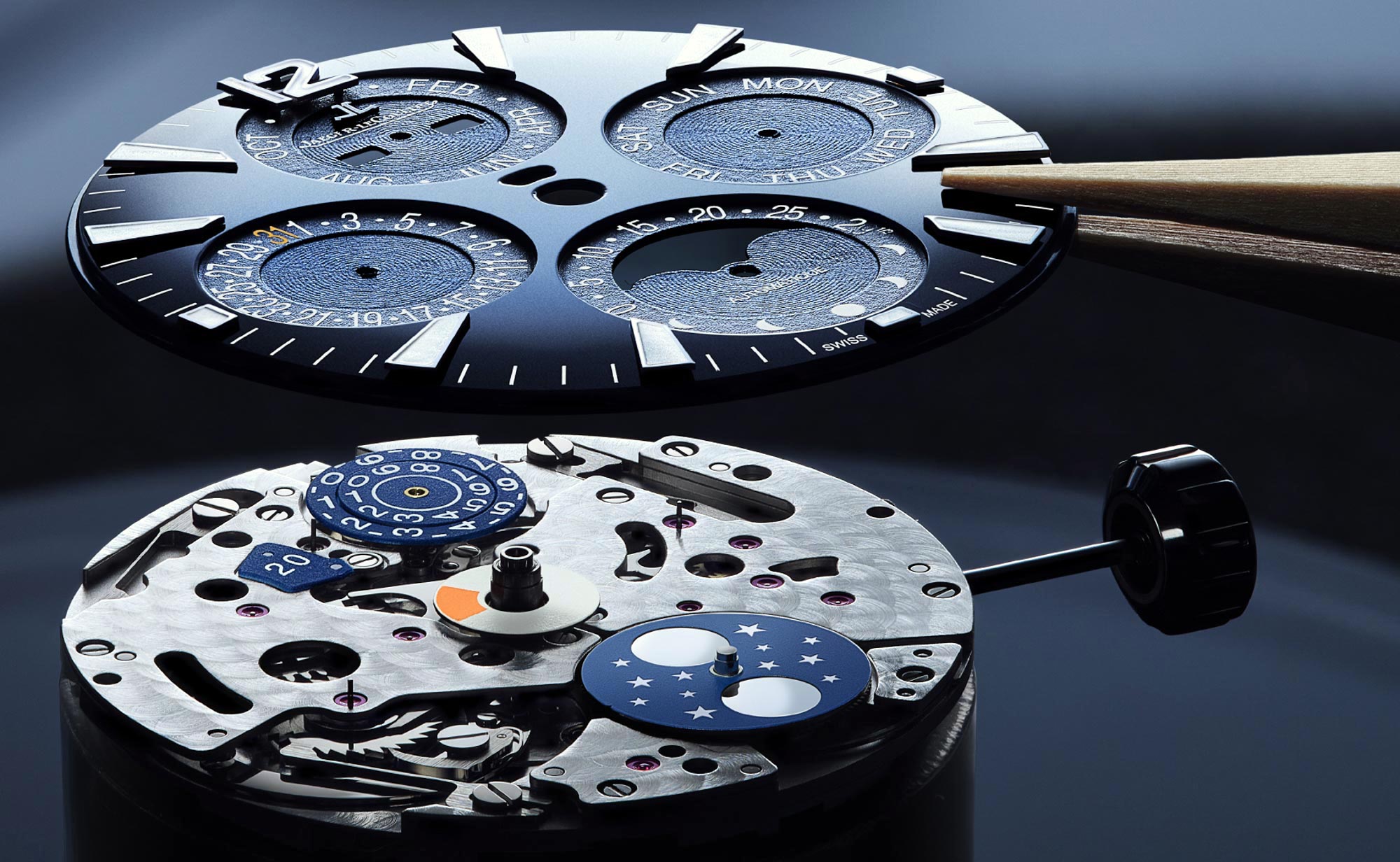
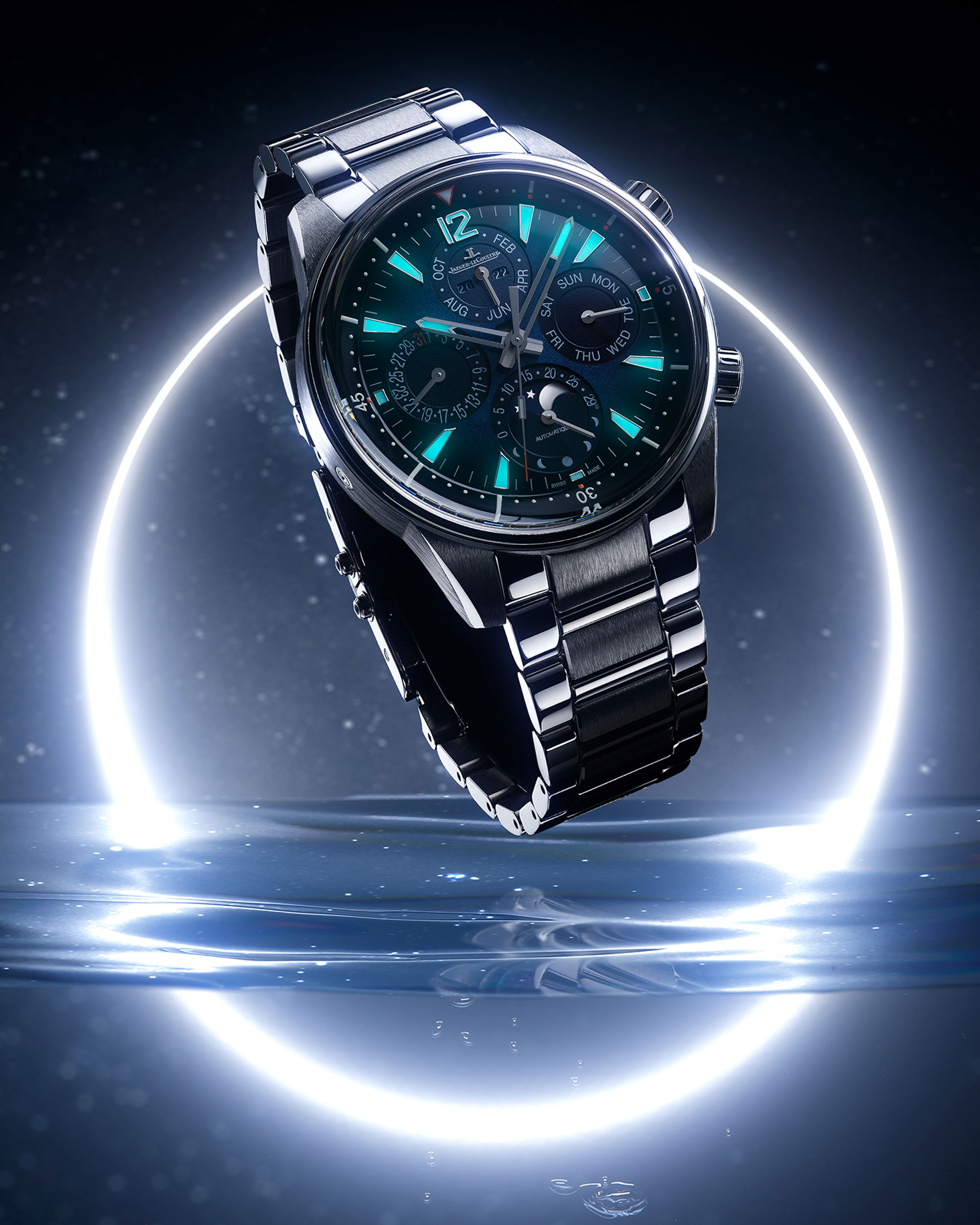
All calendar functions are adjusted via a single pusher that is set flush with the left side of the case. Jaeger-LeCoultre’s sister brand within luxury group Richemont is IWC, which famously offers watches with a perpetual calendar that can be fully adjusted via the crown, without any additional pushers. While that privilege is yet to transfer from IWC to the Polaris, the latter still manages to offer an impressive 100m water resistance rating, a rare feat among perpetual calendars and watches equipped with these tiny adjustment pushers in general.
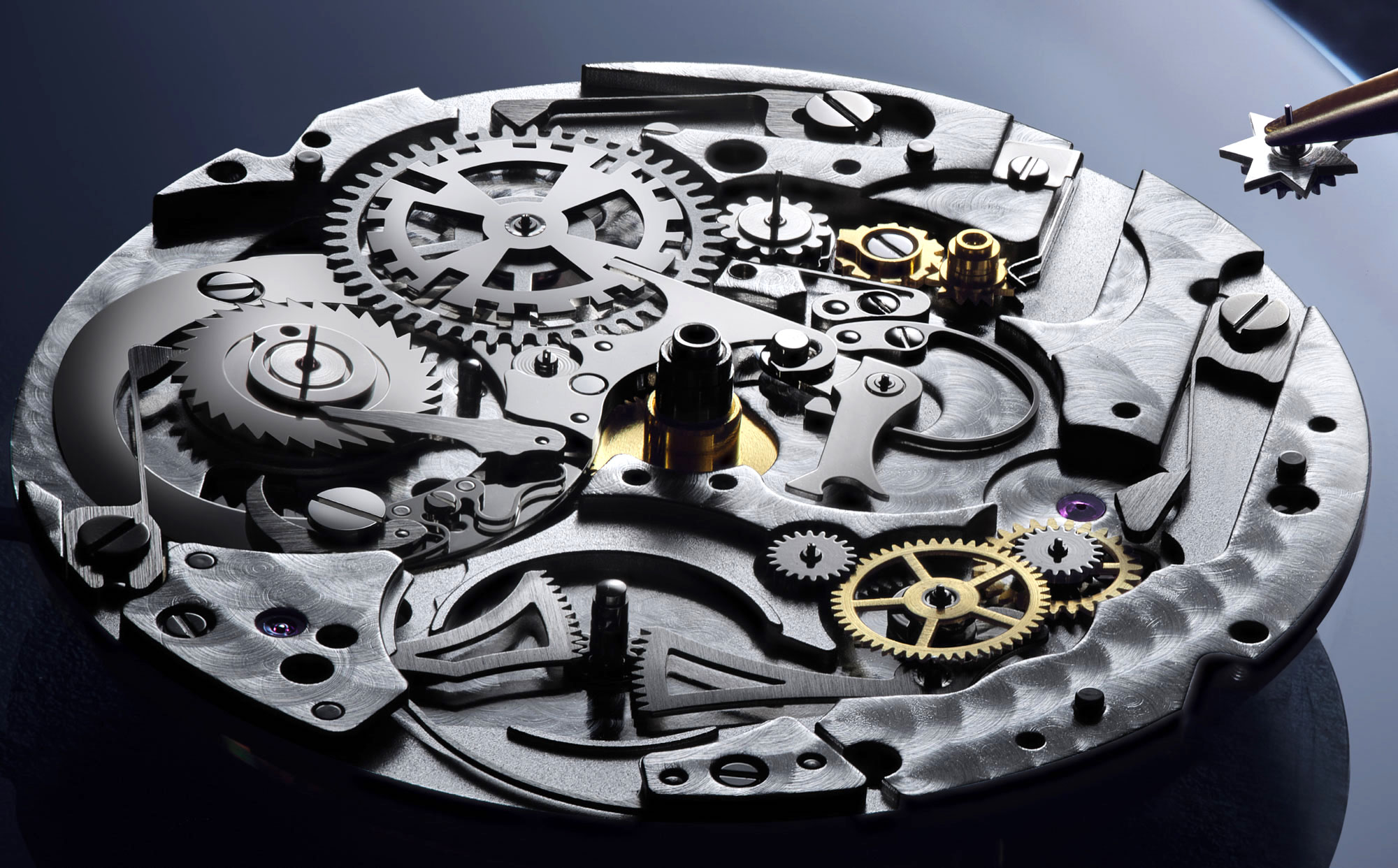
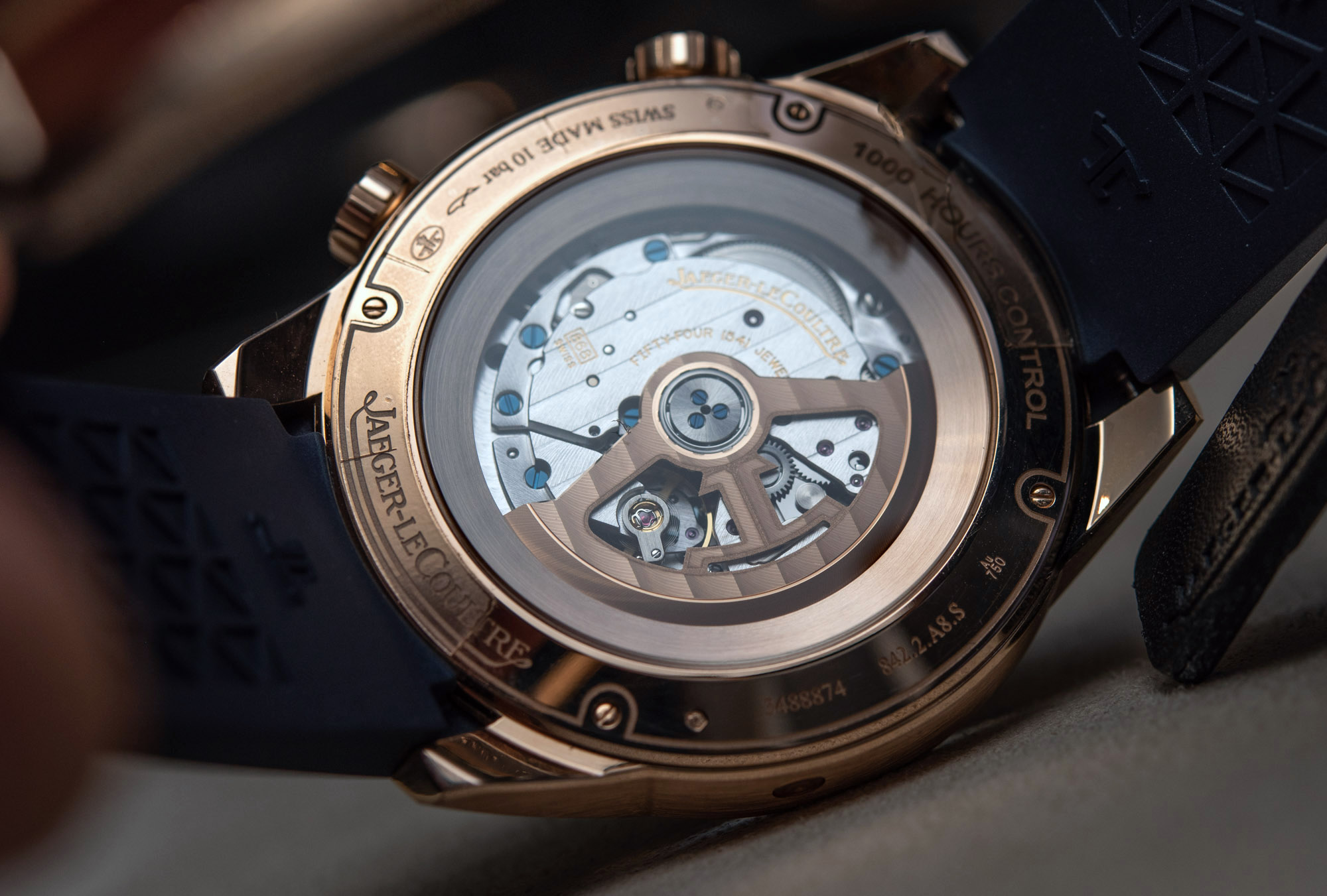
The Jaeger-LeCoultre Calibre 868AA caliber is a self-winding mechanical movement with modern specs: It operates at 4Hz frequency and combines that with an extended power reserve of 70 hours. It wasn’t that long ago that the brand’s watches offered an autonomy of just 40 hours, including this frankly awesome Navy SEALs collaboration piece that I used to own and reviewed here. What probably isn’t so great from an eager watch enthusiast’s point of view is the modular construction of the 868AA movement. Flip the new Jaeger-LeCoultre Polaris Perpetual Calendar watch around and, although you’ll be greeted by a sapphire crystal caseback, it will reveal a movement no more interesting or complex than that in the three-hand base model. That is because all the mechanical wizardry that makes the perpetual calendar work is comprised of a so-called module that is installed on the dial side of the base caliber. Without any cutouts in the dial, none of its components can be seen and appreciated — you’ll have to gaze at the correct readings of the calendar for that.
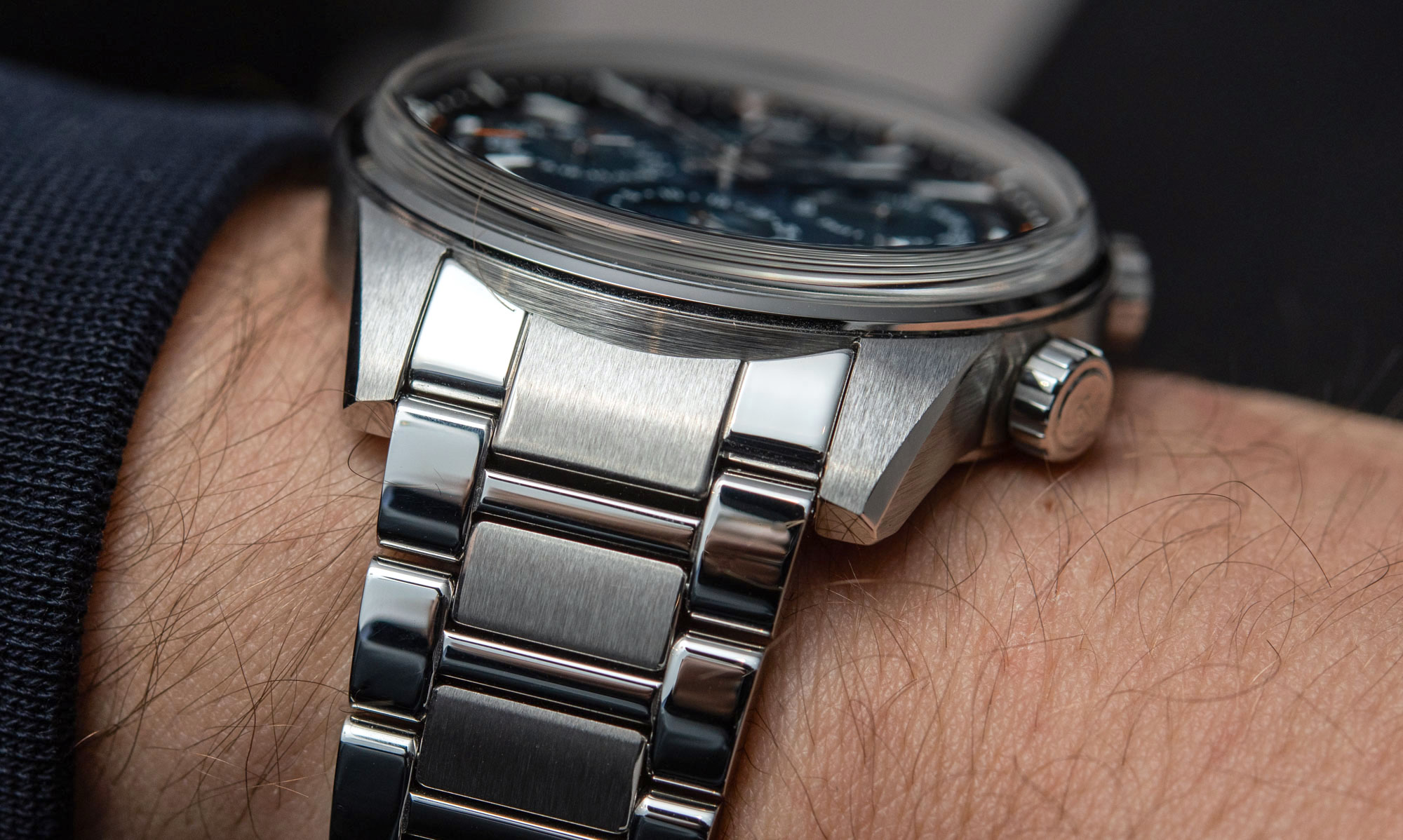
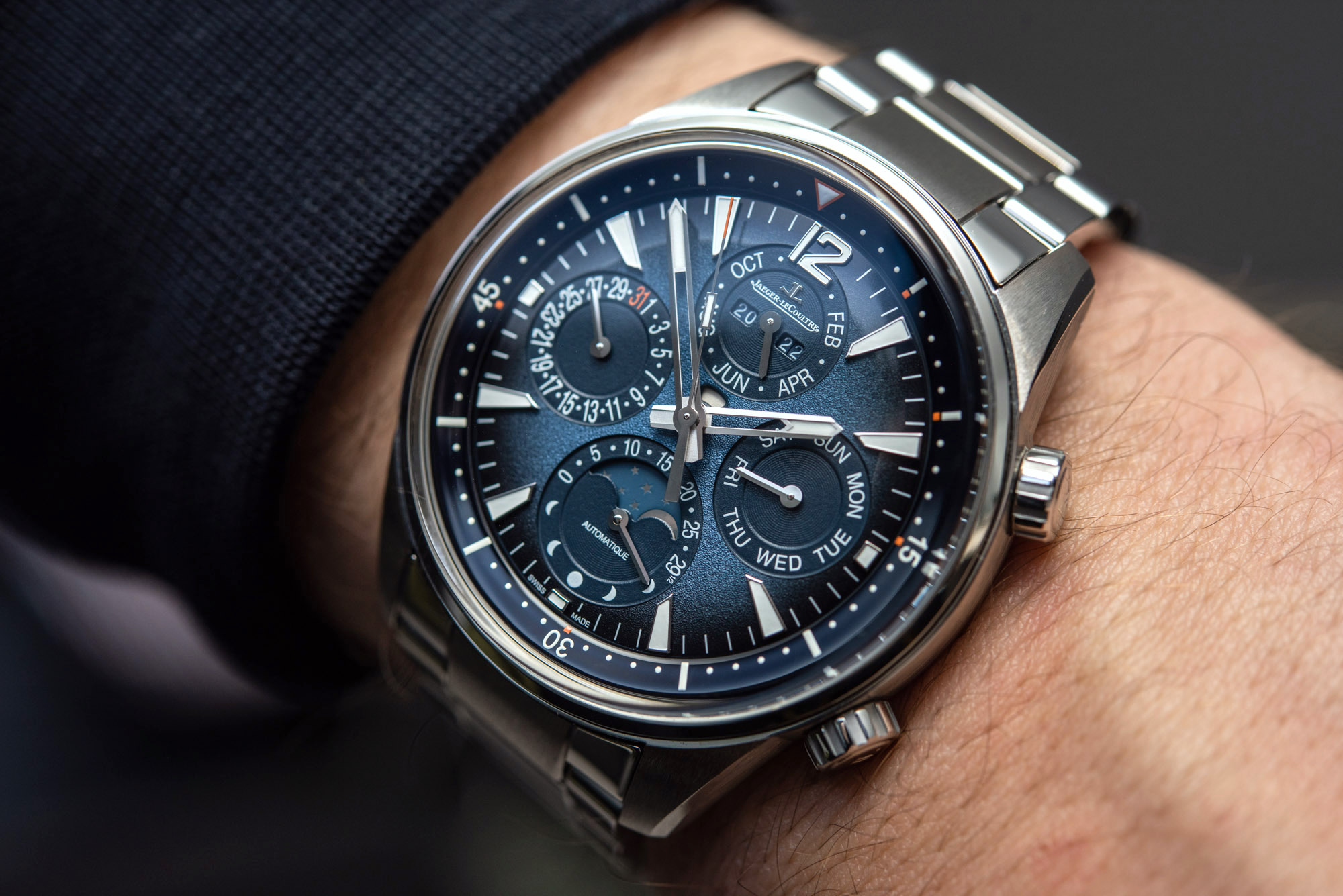
On the wrist, the Polaris Perpetual Calendar looks fantastic, measuring 42mm-wide and just 11.97mm-thick — not bad, considering the boxed crystal, the rotating flange ring assembly, 100m water resistance rating, extended power reserve, self-winding and modular construction. Both the stainless steel and the pink gold pieces can have their straps or bracelet swapped with ease: The former comes on a three-link bracelet and a textured rubber strap in the box, while the latter is equipped with a blue rubber strap and an alligator strap with a folding buckle.
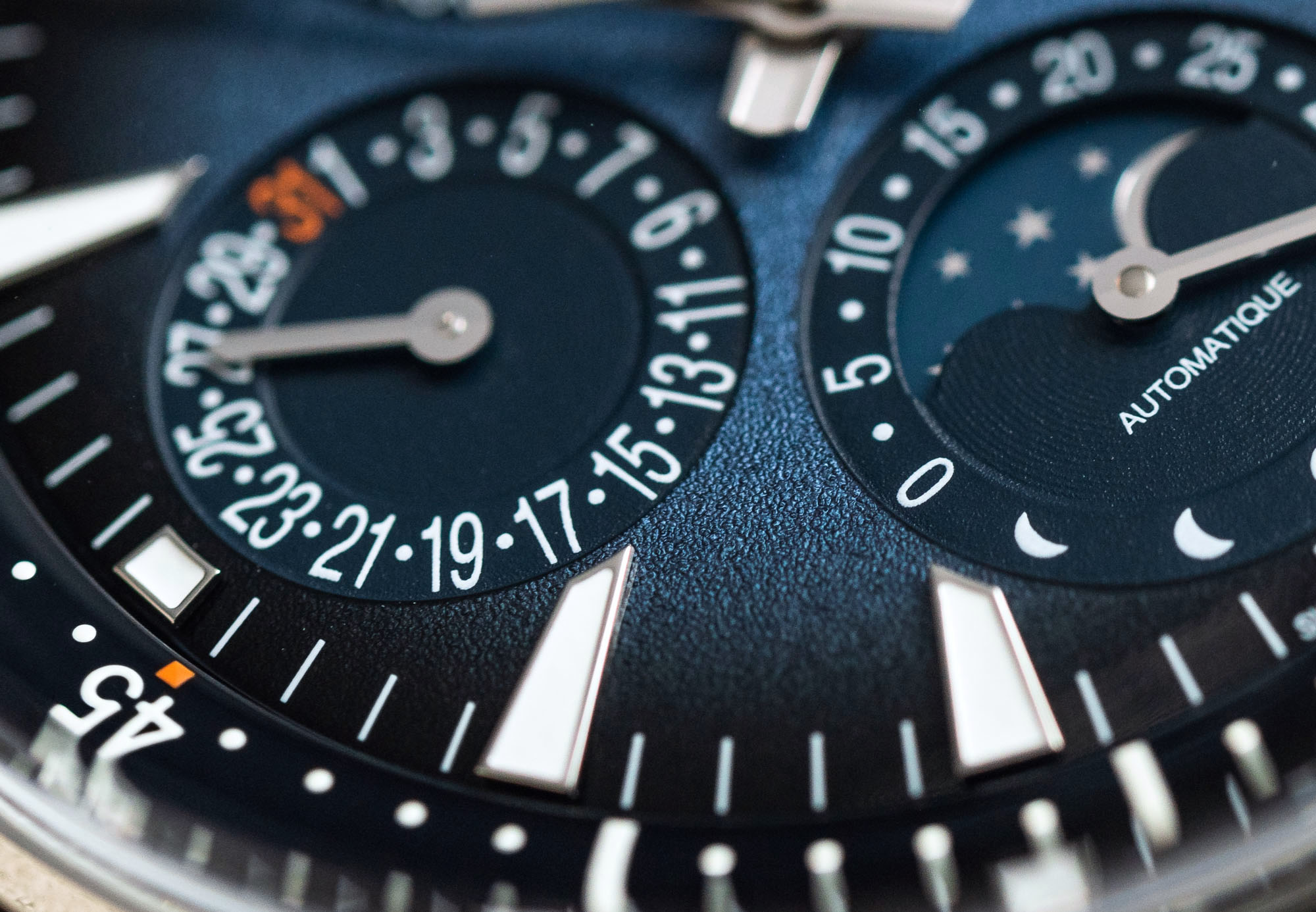

Lift the Polaris up for a closer look and a weakness of this luxurious piece – or at least the prototype we saw at Watches & Wonders Geneva 2022 – will soon reveal itself. Again, it’s worth emphasizing the fact that the pieces we saw might have been prototypes, but under closer scrutiny, the dial quality simply wasn’t on par with most other watches in this elevated price segment. For a lot less than $30,000, we are used to seeing better-defined textures and considerably nicer and sharper pad printing of texts. The consistent reflectivity of the accurately applied hour markers and faceted hands bring a lot of that luxurious feel back to the front of the Polaris Perpetual Calendar — but again, the grainy texture of the main dial, the muddy, poorly defined circular pattern on the subdials and the rough edges around the moonphase aperture hardly add up to an amazing macro experience. Dials by Grand Seiko, the two big German brands, and a variety of Swiss competitors often offer a lot more eye candy, and sometimes for considerably less.
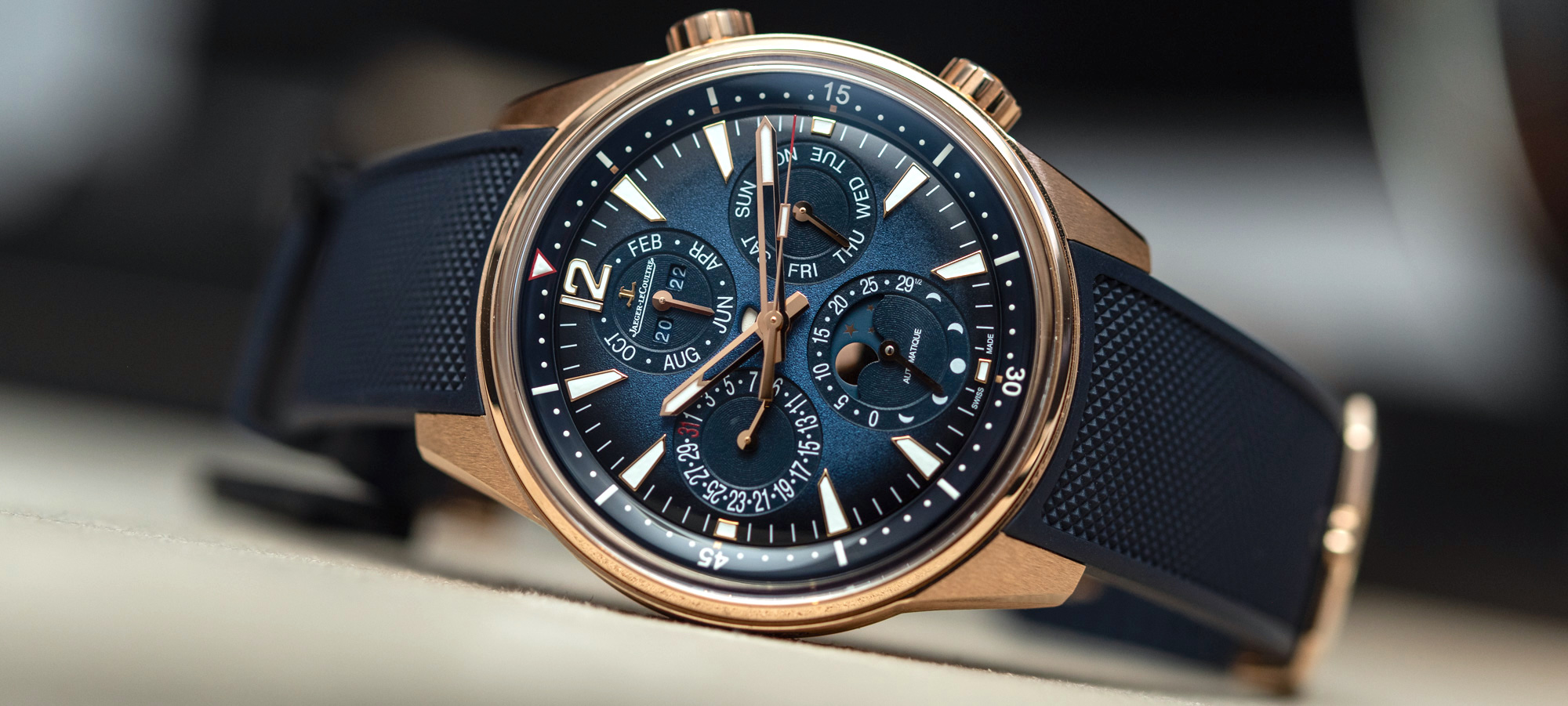
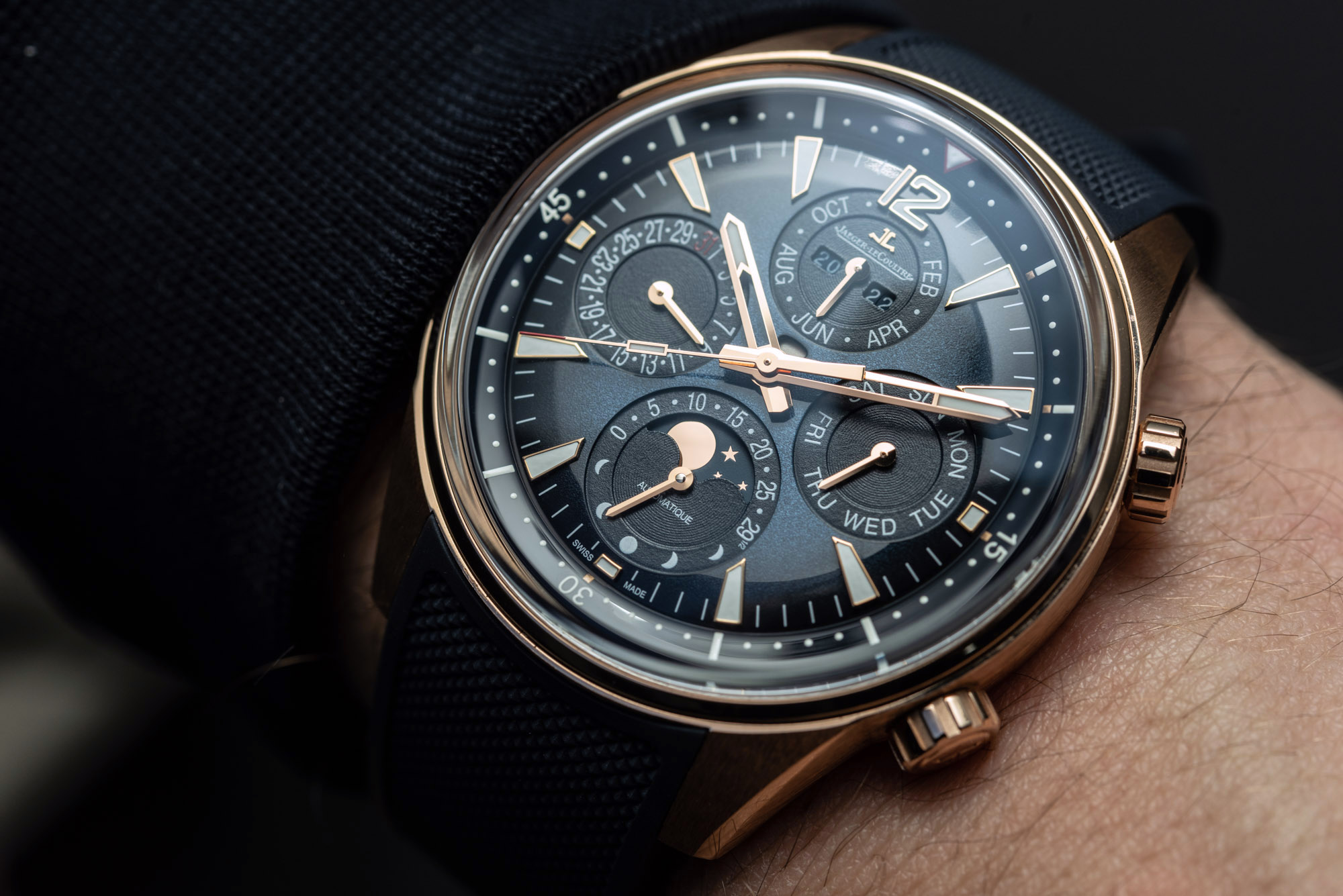
In summary, the Jaeger-LeCoultre Polaris Perpetual Calendar has stepped up its game by offering great daily wearability, thanks to its easy-to-change bracelet, good water resistance, extended power reserve, and a vast range of features and functions, all presented in a neat-looking and comfy-wearing package. While its basic caseback view is arguably understandable, the quality of the dial and especially its finer details will, however, need some work before it can measure up against the competition.
The Jaeger-LeCoultre Polaris Perpetual Calendar Q9088180 in steel is priced at $29,600 USD, while the pink gold version with reference Q9082680 retails for $44,300 USD. There is a premium to be paid for the Polaris’ more rounded and robust package, the more modern base movement, and the Jaeger-LeCoultre name when a perpetual calendars from Richemont sister brand Montblanc retails for $16,600 in steel, and a Baume & Mercier in red gold goes for $26,800. You can learn more at the brand’s website.

